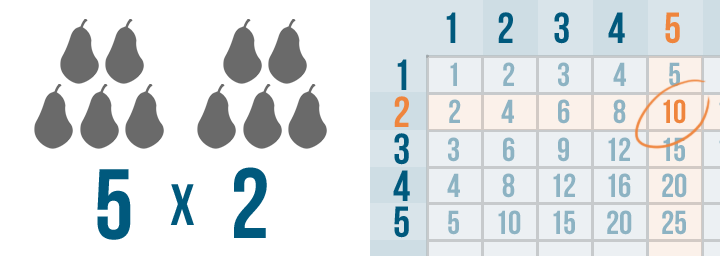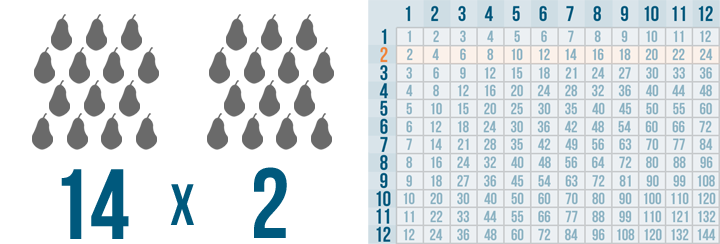Multiplication and Division
Multiplying 2- and 3-Digit Numbers
Stacked Multiplication Problems
When you multiply a number or amount, you're increasing it many times. In the last lesson, you learned that multiplication can be a way to understand things that happen in real life. For instance, imagine that a store sells boxes of pears. The small boxes contain five pears each. You buy two. You could write the situation like this, and use the times table to solve it:

Now, imagine that you decide to buy two larger boxes containing 14 pears each. That situation would look like this:

This problem is harder to solve. Counting the pears would take a while. Plus, there's no 14 on the times table. Fortunately, there's a way to write the problem so that you can break it into smaller pieces. It's called stacking. It means that we'll write the numbers on top of one another instead of side by side.
Now you try. Write these situations as stacked multiplication expressions. Don't worry about solving them yet.
You buy 13 pizzas for a party. Each pizza has 8 slices.
Your hotel room costs $74 a night. You're staying there for 3 nights.
A deck of cards has 4 suits. Each suit has 13 cards.

















